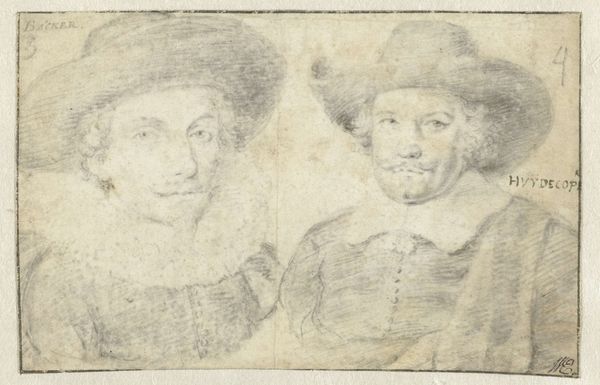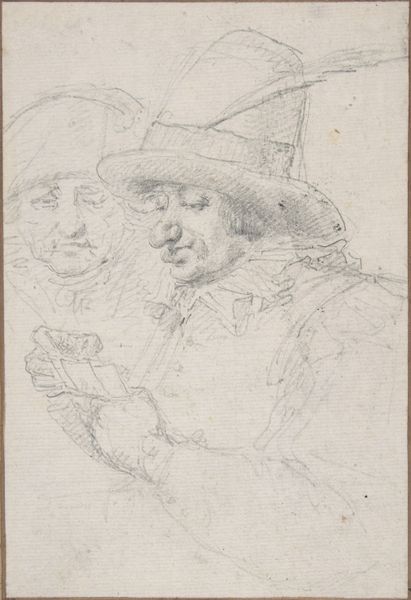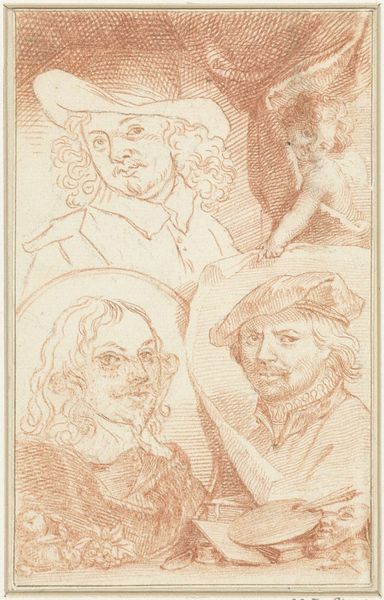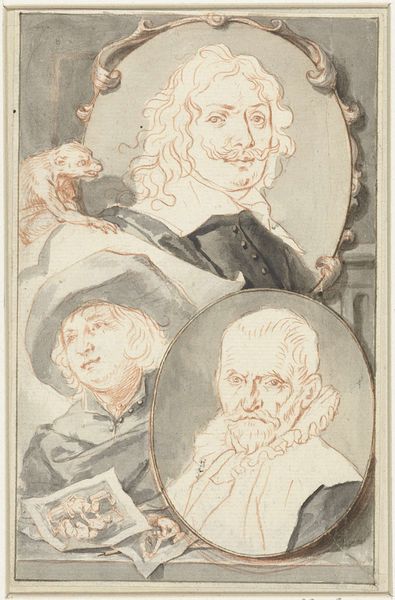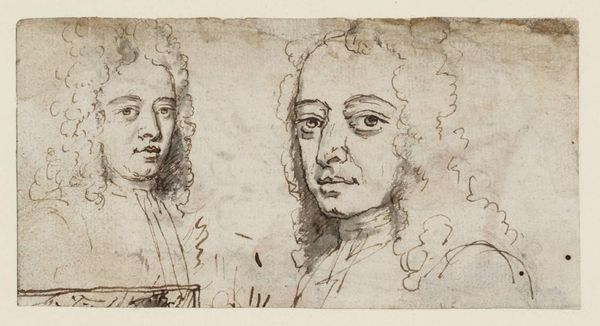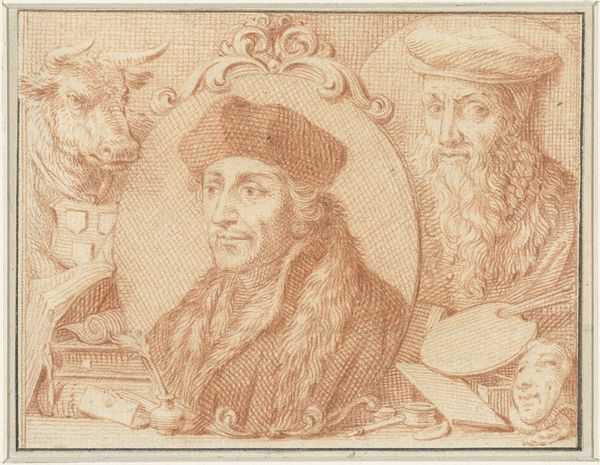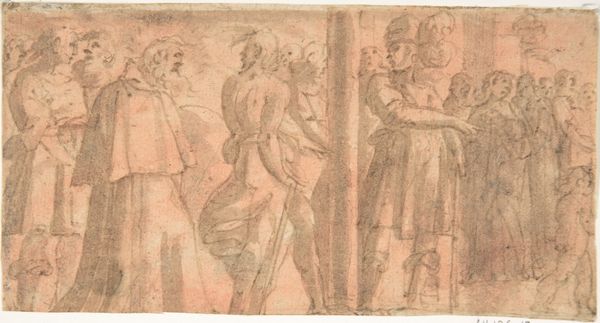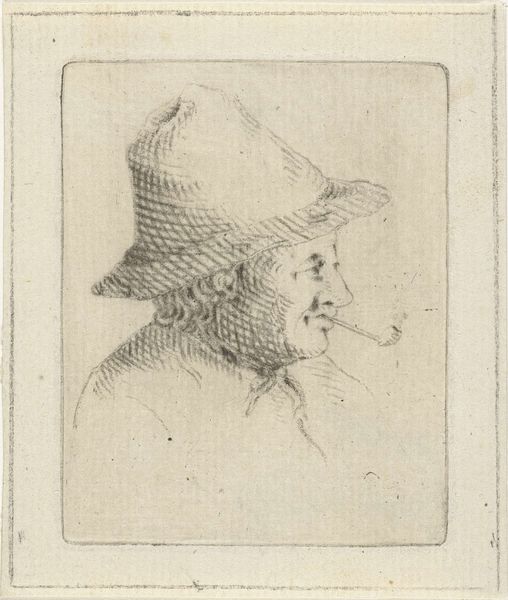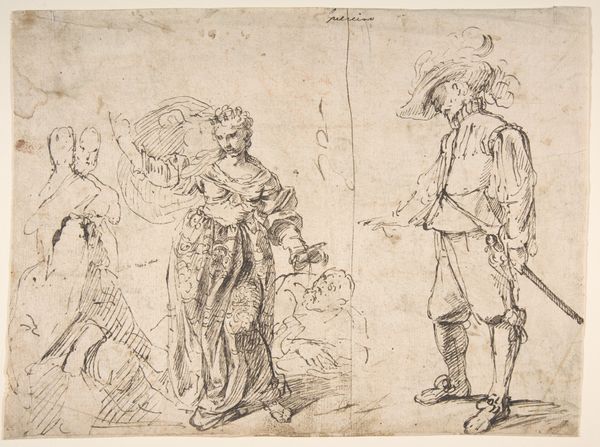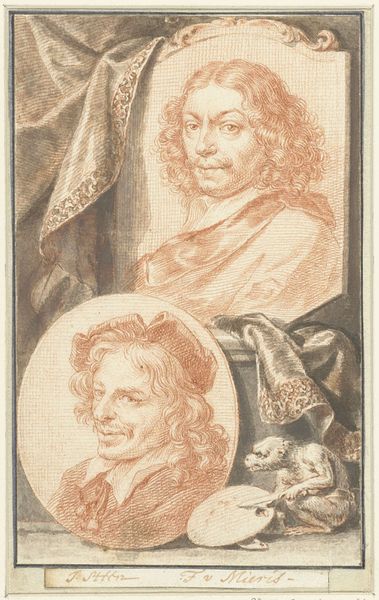
drawing, pencil
#
portrait
#
drawing
#
coloured pencil
#
pencil
Dimensions: height 93 mm, width 145 mm
Copyright: Rijks Museum: Open Domain
Curator: Here at the Rijksmuseum we have "Portretten van Cornelis de Graeff en Frans Banningh Cocq", an interesting drawing made sometime between 1642 and 1700. What's your first impression? Editor: Well, the drawing's muted palette lends a somber, reflective tone, but I'm struck by the raw simplicity. It's clearly a preliminary study, laid bare by the pencil. It lacks refinement but feels authentic, showing a specific moment in its making. Curator: Absolutely. The work feels deeply historical, invoking archetypes of masculine authority and societal power. Look at the subtle but clear rendering of status in their dress, pose, and even the meticulous inclusion of their names. Do you see echoes of a shared historical identity being constructed here? Editor: I'm thinking less about what it represents and more about *how* it's made. Notice the hurried lines and sketched quality. Given that pencil drawings gained popularity during the 17th century due to developments in graphite mining, it becomes a matter of accessibility—it allows art-making on a mass scale, not something inherently high-minded or conceptual. Curator: A valid point, indeed. But consider these men, key figures in Amsterdam’s history. They understood, consciously or not, that portraiture served as social and historical record. The relatively modest materials don’t diminish their symbolic weight, right? Editor: Maybe. But seeing the graphite itself, I consider where it comes from, who mined it, how it was distributed. It points to labour systems, and colonial connections back then. These sketches aren’t floating abstractions; they're embedded in tangible economies. Curator: I grant you that those aspects add layers to interpretation. For me though, these figures and their symbolic charge are impossible to ignore, their echoes continue to inform conceptions of leadership today. Editor: I see the appeal of looking at these symbols. To me though, the texture of the line reveals more. Curator: Well, whether through material or symbol, hopefully we have opened new doorways into viewing this piece and history, perhaps we have created further contemplation and analysis for everyone involved.
Comments
No comments
Be the first to comment and join the conversation on the ultimate creative platform.

